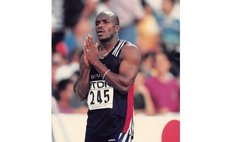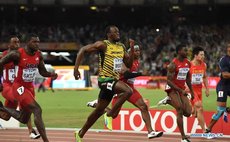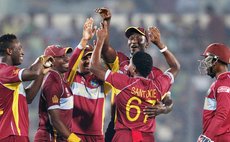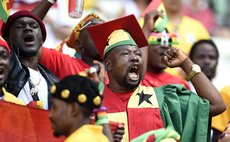The Olympic dream – more than wishful thinking
Olympic Games 2016 highlighted a number of stellar performances by career professionals like swimmer Michael Phelps (USA), Usain Bolt, the world's fastest man (Jamaica), Andy Murray, tennis superstar (Britain) and several others portraying their longevity in remaining at the top of the hill in their selected sport. These are individuals entrenched in their world dominance over a decade or thereabout. Equally, though, the Games brought forth the emergence of very many athletes who were practically unheard of on the world stage. It is this latter – and more especially as they might signpost examples for Dominican youth to follow – that must provide the interest for us to hinge to our Olympic ambitions.
When the diving finish to the women's 400m final by Bahamanian Shaunae Miller was extensively spotlighted as a spectacular feat in snatching victory from a near hopeless position, it sent my mind back all the way to my early days at the Dominica Grammar School. Just to illustrate that great minds do evolve in out of the way places, I was fascinated with the efforts of the late Vermon Julien and his elder brother Winnifred in developing what I considered a spring start to the 100 metres and 200 metres. Somehow the two impressed on the onlooker a manifest rubberband effect in answer to the starter's gun. They always seemed to be two paces ahead of their fellow contestants. Of course, complications on the false start principle had by no means matured into the present day scenario of red cards being issued.
The Julien brothers also worked at taking to a fine point a refining of the dipping action at the tape. Mark you; they may not have taken this to total extreme of diving, as did Miss Miller at Rio to capture the gold medal. However, the Julien race finale could rather aptly be described as a catapult finish. It was the type of finish, if utilized by silver medalist, Miss Allison Felix (USA) would have rendered the extreme desperation of her Bahamian counterpart futile.
Which events may with reason be regarded as useful prospects for our young Olympic hopefuls? The men and women's 400 metres suggest themselves almost immediately. Everyone was captivated by the men's 400 metres final in which the South African 24 year old runner Wayde van Niekerk came from nowhere, so to speak, to run away with the gold in a time of 43.03 seconds, beating Grenada's defending champion Kirani James into second place, and Lashun Merritt of USA into third. This distance suggests itself in view of the strong likelihood of presence of suitable genetic material in Dominica.
Genes are a factor towards success. Not necessarily the sole factor, but extremely important nonetheless. Sometime in the early to mid eighties Bruce Phillip of Dominica Grammar School tied in the same time with the Jamaican winner of the 400 metres in the Junior Carifta Games in Barbados. Bruce had then not more than four or five months of specialized training with Emanuel Loblack, and he later studied engineering in New York where he quickly emerged as the leading 400 metres runner among North American college students. At that time he clocked around 46 seconds.
Bruce's athletic career was cut short by the consuming demands of his work as engineer with a top construction company, which in a sense precluded the level of track training he would have liked to pursue.
Don't tell me there are no more Bruce Phillips or Dawn Williams to be unearthed among our school kids! Don't tell me either that we have run short of men with the knowledge and commitment of Emanuel Loblack!
Listening to the champions who emerged at Rio, almost everyone to a man, or woman, revealed that their success relied on the unrelenting efforts of their coaches and families. In no way was Olympic glory the result of a sudden spark or effort. It was inevitably the outcome of a progressive grind to the top of the pyramid. It was exclusively a matter of always looking up and forward without yielding to inertia or laissez faire.
Importance of the school spirit has to be paramount in molding and nurturing our athletes. Sports teachers like the late Erickson Watty and more recently Ossie Savarin at the D.G.S. are the needed influence in planting the seeds of athletic greatness. The road to athletic gold can, with luck, be as short as four years, but more likely it stretches from eight to twelve years or even more. And more than anything else, the advice in the good old poem about "the heights by great men reached and kept" will always be pertinent. Any of our youngsters, now at age 15, who seek to emulate Kirani James for a shot at Olympic glory in the 400 meters must schedule himself to clock 53 seconds shortly, then 49 seconds at age 16, 46 seconds at age 17 leading to 44 seconds at age 18. Similarly, a girl who is now at age 15 must move to do 58 seconds within next year and progressively lift her efforts to 55 seconds by the time she is 18, keeping 52 seconds as her target by her 18th birthday, 50 seconds by her 19th birthday.
Sounds easy on paper! Yet, there is no magic wand. Training will entail three days per week for the early teens, leading up to five days per week later. Arch enemy to be detested and rigorously avoided would be the endemic killers of ambition who take it as a sacred duty upon themselves to pose the insipid question: "why are you doing this?" These are the same people who unashamedly would claim filial ties to the eventual national hero. More than this, they will pridelessly seek handouts from the eventual international hero. These we shall always have with us – unfortunately! Our major administrative problem in Dominica's sports is the requirement of adjusting to the future. This you can't effectively address if you have lost sight of the past while being unable to quantify change and the imperatives entailed.




